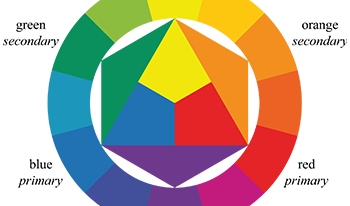References
1AlbertiL. B.On Painting19662nd ed.Yale University Press
2AndrickG. R.Tager-FlusbergH.1986The acquisition of colour termsJ. Child Language13119134119–3410.1017/S0305000900000337
3BerlinB.KayP.Basic Color Terms: Their Universality and Evolution1969University of California PressBerkeley, CA
4BernsR. S.Billmeyer and Saltzman’s Principles of Color Technology19813rd ed.WileyNew York, NY
5BleicherS.Contemporary Color: Theory and Use20122nd ed.Cengage LearningClifton Park, NY
6BoyleR.Experiments and Considerations Touching Colours1664Henry HerringmanLondon, England
7BriggsD. J. C.
8CiancioloP. J.Illustrations in Children’s Books19762nd ed.Wm. C. Brown Company PublishersDubuque, IA
9DerefeldtG.GourasP.1991Colour appearance systemsThe Perception of Colour218261218–61Macmillan
10FairchildM. D.Color Appearance Models2005WileyChichester, England
11FinlayV.Color: A Natural History of the Palette2007Random HouseNew York, NY
12FoleyJ. D.van DamA.FeinerS. K.HughesJ. F.Computer Graphics: Principles and Practice19902nd ed.Addison-WesleyBoston, MA
13FryerM. J.2006ComplementarityOptics & Laser Technology38417430417–30
14GeigerL.Contributions to the History of the Development of the Human Race1880Trübner & CompanyLondon, England
15GleesonL.Making Picture Books2003Scholastic PressGosford, NSW, Australia
16GourasP.GourasP.1991Cortical mechanisms of colour visionThe Perception of Colour179197179–97Macmillan
17HårdA.SivikL.TonnquistG.1996NCS, natural color system—from concept to research and applications. Part IColor Res. Appl.21180205180–20510.1177/1069397104267891
18HardinC. L.BackhausW. G. K.BackhausW.KlieglR.WernerJ. S.Basic color terms and basic color categoriesColor Vision: Perspectives from Different Disciplines1998Walter de GruyterBerlin, Germany
19HardinC. L.2005Explaining basic color categoriesCross-Cultural Research39728772–87
20HarknessN.2006The colour wheels of art, perception, science and physiologyOptics & Laser Technology38219229219–2910.1037/h0041403
21HunterR. S.The Measurement of Appearance1975WileyNew York, NY
22HurvichL. M.JamesonD.1957An opponent-process theory of color visionPsychological Rev.64384404384–404
23IttenJ.The Elements of Color1970Van Nostrand ReinholdNew York
24JacksonR.MacDonaldL.FreemanK.Computer Generated Color: A Practical Guide to Presentation and Display1994WileyNew York, NY
25JonesW. J.German Colour Terms: a study in their historical evolution from earliest times to the present2013Vol. 119John Benjamins PublishingAmsterdam, The Netherlands
26KaiserP. K.BoyntonR. M.Human Color Vision1996Optical Society of AmericaWashington, DC
27
28KuehniR. G.SchwarzA.Color Ordered: a Survey of Color Systems from Antiquity to the Present2008Oxford University PressNew York, NY
29
30
31
32NewtonI.Opticks: or, a Treatise of the Reflexions, Refractions, Inflexions and Colours of Light1704Royal SocietyLondon, England
33ParameiG. V.2005Singing the Russian blues: an argument for culturally basic color termsCross-cultural Research39103810–38
34ParkhurstC.FellerR. L.1982Who invented the color wheel?Color Research & Application7217230217–3010.1037/0096-3445.129.3.369
35PlattsJ.2006Newton, Goethe and the process of perception: an approach to designOptics & Laser Technology38205209205–910.1037/h0032606
36RibeN. M.
37RobersonD.DaviesI.DavidoffJ.2000Color categories are not universal: replications and new evidence from a stone-age cultureJ. Experimental Psychology: General129369398369–98
38HeiderE. Rosch1972Universals in color naming and memoryJ. Experimental Psychology93102010–20
39ShapiroA. E.1994Artists’ colors and Newton’s colorsIsis85600630600–30
40ShirleyP.AshikhminM.MarschnerS.Fundamentals of Computer Graphics20093rd ed.AK PetersBoca Raton, FL
41StoneM.A Field Guide to Digital Color2003AK PetersBoca Raton, FL
42WaldmanG.Introduction to Light: The Physics of Light, Vision, and Color2002DoverMineola, NY
43WinawerJ.WitthoftN.FrankM. C.WuL.WadeA. R.BoroditskyL.
44

 Find this author on Google Scholar
Find this author on Google Scholar Find this author on PubMed
Find this author on PubMed